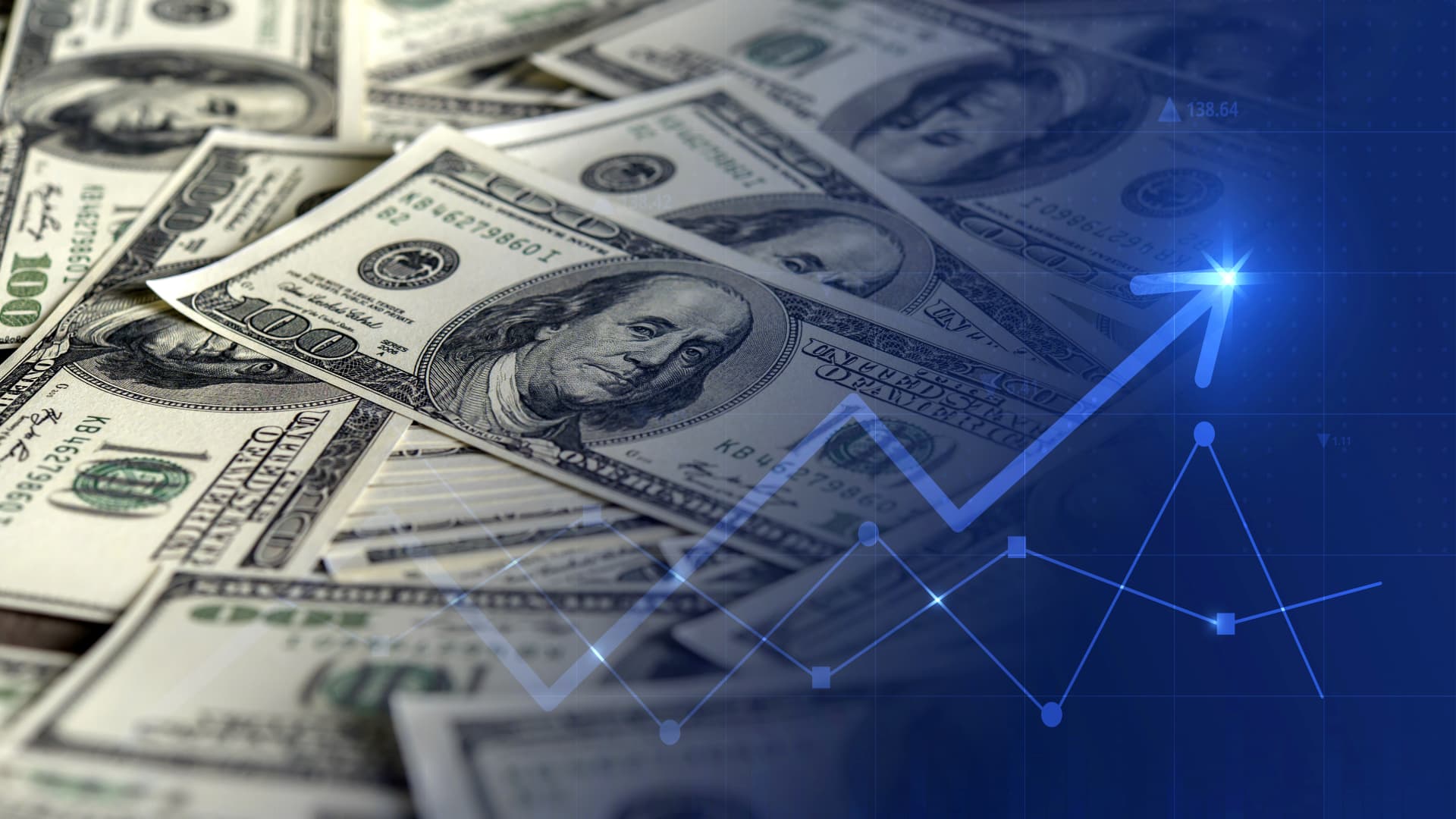The dollar was steady on Tuesday, hovering near a three-month high as a divided Federal Reserve spurred traders to rein in interest rate cut wagers.
Javier Ghersi | Moment | Getty Images
The dollar was steady on Tuesday, hovering near a three-month high as a divided Federal Reserve spurred traders to rein in interest rate cut wagers while investors awaited an Australian policy meeting where the central bank is likely to stand pat.
The yen was softer at 154.38 per U.S. dollar in early Asian hours, just shy of the eight-and-a-half-month low it touched last week, leading to some jawboning from Tokyo and stoking intervention jitters.
Fed officials continued pressing competing views of where the economy stands and the risks facing it in the absence of economic data suspended due to the federal government shutdown.
The Fed cut rates last week but Chair Jerome Powell suggested that might be the last cut of the year. Traders are now pricing in a 65% chance of a rate cut in December, compared with 94% a week earlier, CME FedWatch showed.
That shift in near-term expectations has boosted the dollar. The euro eased 0.11% to $1.1506, near a three-month low, while sterling last fetched $1.312, down 0.13%.
The dollar index, which measures the U.S. currency against six other units, was 0.1% higher at 99.99, at a three-month high.
Data Gap leaves investors in the Dark
With government economic data missing due to the second-longest U.S. shutdown, investors this week are eyeing non-government sources of economic data, including ADP employment data, to gauge the health of the U.S. economy.
On Monday, accounts from manufacturers in the Institute for Supply Management survey painted a dire picture of the factory sector, showing U.S. manufacturing contracted for an eighth straight month in October as new orders remained subdued.
“There is no end in sight to the shutdown and the longer this drags on the bigger the economic implication will be,” MUFG strategists said in a note.
“Powell likely wants to avoid appearing as though markets are forcing the Fed to cut. We still argue that the labor market warrants more rate cuts, but the risk is the Fed skips meetings ahead.”
Powell’s hawkish pivot has come at the wrong time for the yen as the Bank of Japan held rates steady last week. While Governor Kazuo Ueda last week sent the strongest signal yet that a rate hike was possible as soon as December, markets remained underwhelmed by the central bank’s gradual approach.
The yen is approaching levels at which Japanese authorities intervened in markets in 2022 and 2024 to support the currency.
“Right now, it seems as though the yen is very weak on almost any metric,” said Thomas Mathews, head of markets for Asia Pacific at Capital Economics.
“Investors are also still pricing in some chance of a hike at the next meeting. So, unless the BOJ do tighten policy before the end of the year, and they probably won’t, the most likely path for the yen is even weaker in the near term.”
Spotlight on RBA
The Australian dollar was little changed at $0.6535 ahead of the Reserve Bank of Australia policy meeting. The Aussie is up nearly 6% this year.
The central bank is widely expected to hold rates steady after a surprisingly hot reading on third-quarter inflation showed building and services costs were not slowing as hoped.
The stronger-than-expected inflation reading has effectively shut the door on any near-term rate cuts and cast doubt on how quickly the RBA can start easing. Markets have sharply scaled back expectations, now pricing in only one cut by mid-2026.
Kristina Clifton, a senior economist at the Commonwealth Bank of Australia in Sydney, expects the RBA to pivot to a more hawkish tone after last week’s stronger inflation data.
“Hawkish commentary from the RBA and/or an upward revision to the inflation forecast will cause markets to unwind some rate cut pricing. An unwind of rate cut pricing will support AUD/USD.”
